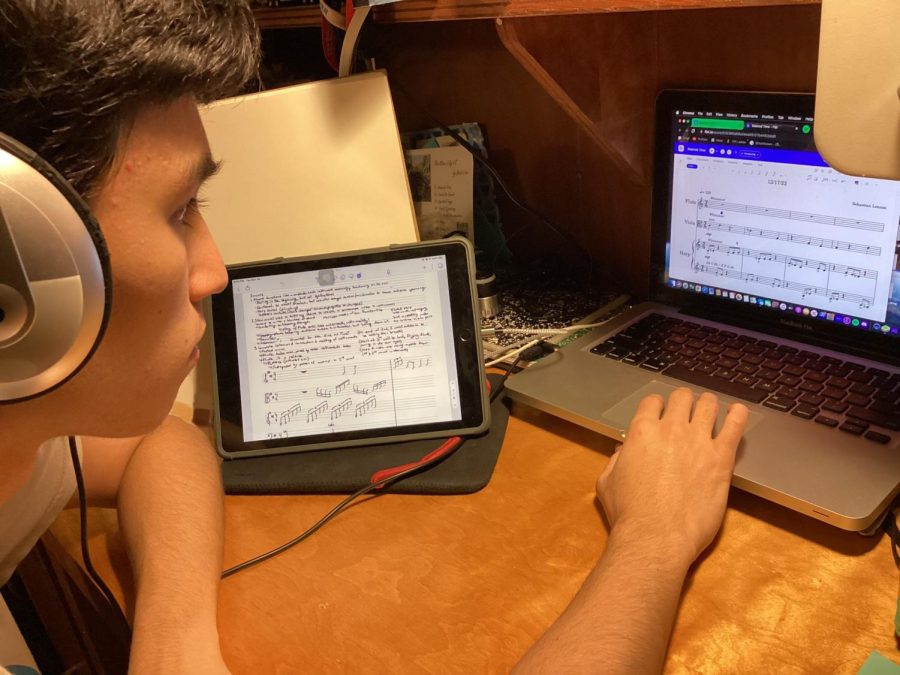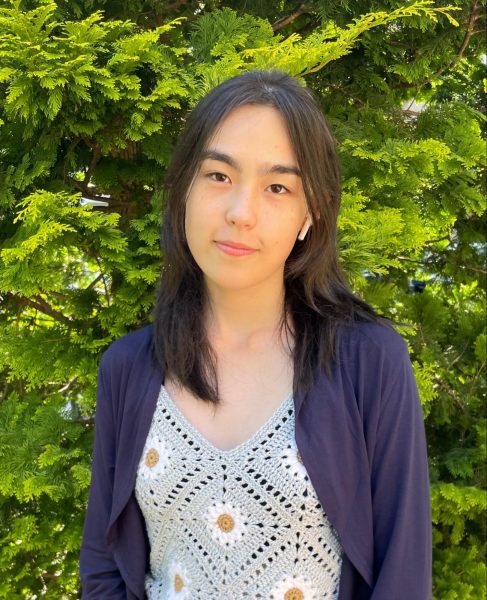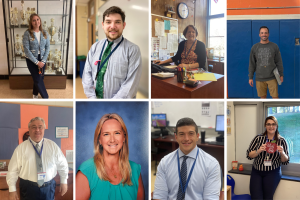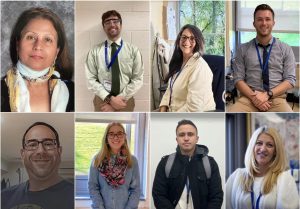Behind the Eyes of a Composer
Photographed by Madeleine Lennox
Composing the Piece Through the Parts — Senior Sebastian Lennox reviews the completed segments of his music composition. Notes for the piece are lined up to the right, on his iPad; on his computer, his composing software is set up. Through the headphones, flute, viola, and harp play.
March 16, 2023
One foot away from his desk, Sebastian plucks a melody on his viola. Every few seconds, the tune is disrupted as he fiddles with the piece, adding notes or smoothing clunky parts. On his desk, his computer plays a quiet metronome while simultaneously recording the music. As Sebastian plucks (pizzicato) a string, his deep concentration ebbs into excitement as the last tweaks complete the piece. This methodology demonstrates Sebastian’s approach to composing.
Sebastian Lennox, senior at South High School and composition major at the Juilliard Preparatory Program has been a composer for two and a half years. He transitioned from majoring in the viola at the Saturday preparatory program to musical composition a year and a half ago. Sebastian is principal violist of the school orchestra, playing the same instrument as his mother once did. Over the past few summers, Sebastian has also attended music festivals at Interlochen, Tanglewood, and the Los Angeles Philharmonic, enjoying connections with fellow composers, which can be summed up in one particularly memorable experience.
“My fellow composition majors and I would often go to the Little Red Schoolhouse after class to hang out. Usually, two guys: one who was an amazing improvisational pianist and another who had brought his guitar, would play around with a melody, while the rest of us played cards. One night, they invited us to join in: me on my viola and another of my friends on the Euphonium. It showed me how, even though we were all composers, our sources of inspiration (our instruments and heads) could all create a symphony — on the spot.”
Hoping to share his love of music with more people (and encourage their progression of music when means may have been limited,) Sebastian started a nonprofit called Whole Young Musician (WYM for short.) Their mission? To support aspiring young musicians sustain their dream of musical advancement and success. The website wholeyoungmusician.org explains what they have accomplished in more detail: connecting underprivileged musicians to resources including instruments, lessons, opportunities, and concert wear. Through his organization, Whole Young Musician, Sebastian is able to offer a wide range of student musicians similarly enriching experiences with music that he’s been fortunate to have.
These enriching experiences have culminated in Sebastian’s craft, composition. As he explains, “Music for me is like another language. Music is another way we craft stories, like in English. Composing is a way for me to create. Whether it’s writing notes down on a page and weaving melodies or using my learned techniques on the viola to influence a piece, composition becomes this way to convey ideas and express myself.”
As surprising as it may seem, Sebastian’s first encounter with writing his own music was accidental and seemingly inconsequential. Before freshman year, at the Manhattan School of Music summer program, Sebastian chose a music composition elective. While he did not view it as particularly engaging that summer, a year later, remote learning granted him time for experimentation. Deciding he “wanted to try something new in the world of music,” — he began to compose. The encouragement of his viola teacher, who not only taught him chord progressions, but a fresh perspective on music, inspired him to continue writing.
Now, after two years of writing, Sebastian has developed a multi-step editing and composing process. First, he comes up with an idea, sometimes, as he’s falling asleep or while listening to another piece of music. Then, it’s straight to the drawing board. Sometimes, for hours, he will work out the details: a description of each movement, the form of the piece, and which instruments to include. Afterwards, armed with a blank manuscript on Notability, his stylus, and his whirring mind, he tinkers with the melodic line on the staff, usually in treble clef (an easy way to transcribe). At this point, his main composing software, Sibelius, comes into play. There, all the notes and instruments will meld together to be played in synchrony. The last couple of edits produce the finished piece, ready to be reviewed by other composers and shared with the Juilliard composition community. Then the cycle repeats.
Composition is not the only cycle of music, however. Perhaps Sebastian’s musical heritage has granted him a sort of musical gene or disposition. Sebastian’s father, Timothy Lennox, has used his OP-1 synthesizer and electric piano (now passed down to Sebastian) to create synth pop for the past 25 years. Even when Sebastian was a child, his father enjoyed the experimentation of rhythm. His mother, Grace Cho, also played the viola since early childhood. After playing throughout high school and college, she toured and traveled around Europe for a short time. Her recounted experiences to a 5-year-old Sebastian had him laughing and on the edge of his seat. With motorcycle miracles just in time for a concert to musicians being stranded in the middle of Malaga, Spain, his mother’s stories sparked Sebastian’s first interest in music.
Music isn’t simply an interest anymore, however. He has expressed his intent to major in composition at college. “Taking courses like music theory and music history in college will help me contextualize my writing and be able to creatively manipulate my notes. After that, I want to start to dive into electronic and electroacoustic music to create more unconventional pieces. I’m excited to try experimenting with sampling and mixers, too.” With the Intro to Music Technology course here at South High, Sebastian continues to fine tune his craft and prepare for a musical future. ”







